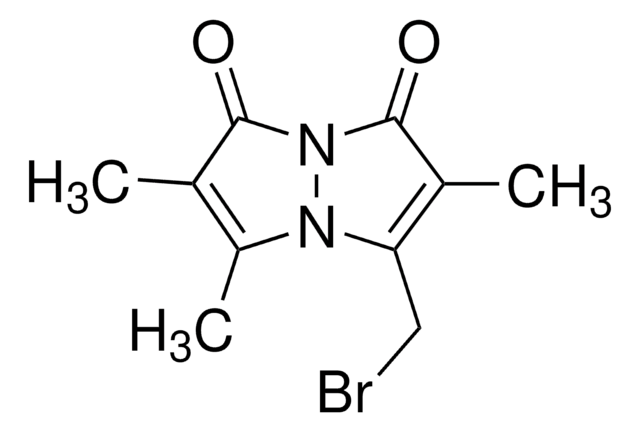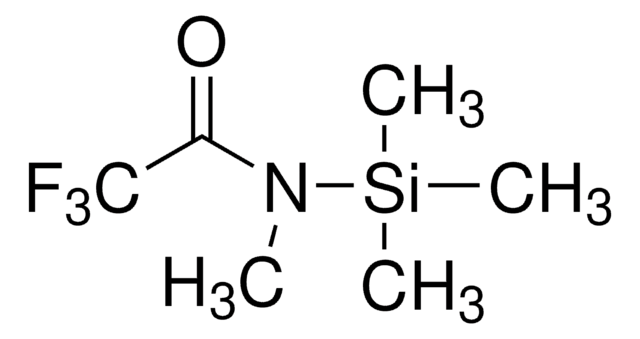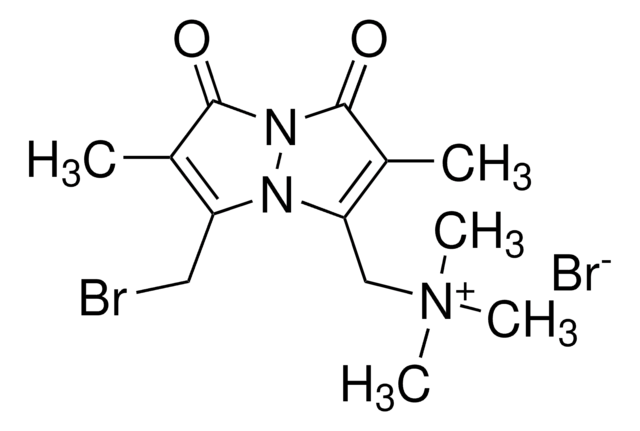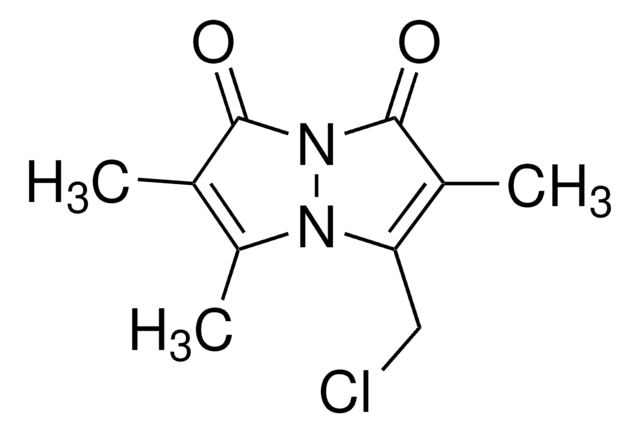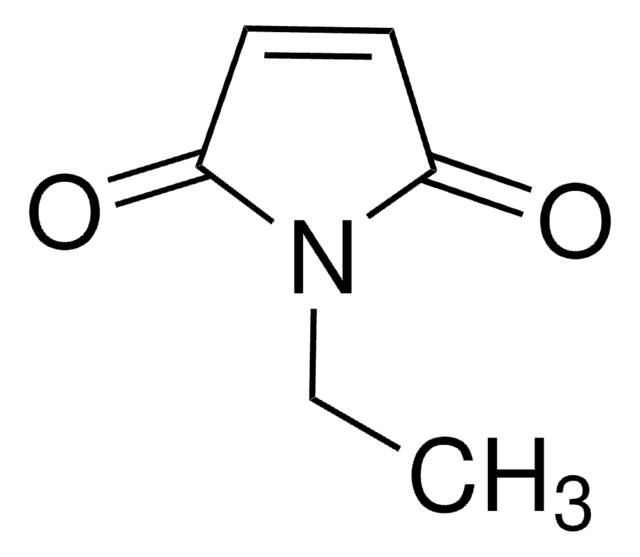69898
Bromobimane
suitable for fluorescence, BioReagent, ≥95% (HPCE)
Synonyme(s) :
Monobromobimane
About This Item
Produits recommandés
Gamme de produits
BioReagent
Niveau de qualité
Essai
≥95% (HPCE)
Forme
solid
Pf
152-154 °C (lit.)
Solubilité
DMF: soluble
DMSO: soluble
acetonitrile: soluble
methanol: soluble
Fluorescence
λex 390 nm; λem 478 nm in 0.1 M phosphate pH 7.5 (after derivatization with glutathione)
λex 398 nm
Adéquation
suitable for fluorescence
Température de stockage
2-8°C
Chaîne SMILES
CC1=C(C)C(=O)N2N1C(CBr)=C(C)C2=O
InChI
1S/C10H11BrN2O2/c1-5-7(3)12-8(4-11)6(2)10(15)13(12)9(5)14/h4H2,1-3H3
Clé InChI
AHEWZZJEDQVLOP-UHFFFAOYSA-N
Vous recherchez des produits similaires ? Visite Guide de comparaison des produits
Catégories apparentées
Description générale
Application
Caractéristiques et avantages
- Rapid reactivity.
- Ease of separation of derivatives by reverse HPLC.
- Ability to penetrate cells.
Conditionnement
Autres remarques
Vous ne trouvez pas le bon produit ?
Essayez notre Outil de sélection de produits.
Code de la classe de stockage
11 - Combustible Solids
Classe de danger pour l'eau (WGK)
WGK 3
Point d'éclair (°F)
Not applicable
Point d'éclair (°C)
Not applicable
Équipement de protection individuelle
Eyeshields, Gloves, type N95 (US)
Faites votre choix parmi les versions les plus récentes :
Déjà en possession de ce produit ?
Retrouvez la documentation relative aux produits que vous avez récemment achetés dans la Bibliothèque de documents.
Les clients ont également consulté
Notre équipe de scientifiques dispose d'une expérience dans tous les secteurs de la recherche, notamment en sciences de la vie, science des matériaux, synthèse chimique, chromatographie, analyse et dans de nombreux autres domaines..
Contacter notre Service technique